5 Ice Fishing Knots to Learn This Winter
By Debbie Hanson
Jan 24, 2023
Summary of ice fishing knots that have advantages or disadvantages in different situations, which knots are best ice fishing knots for your applications
When it comes to ice fishing knots, there will always be some debate over which ones are best to use in certain situations. For example, some terminal knots (knots that attach a hook or jig to your line or leader) are referred to as “snug knots” because they tighten or snug up against the eye of the hook. Snug knots are often considered to be stronger knots, but they can reduce the amount of action that a jig or lure has in the water. By learning about the advantages and disadvantages of different ice fishing knots, you can decide which ones are best for your personal ice fishing applications.
1. Improved Clinch Knot
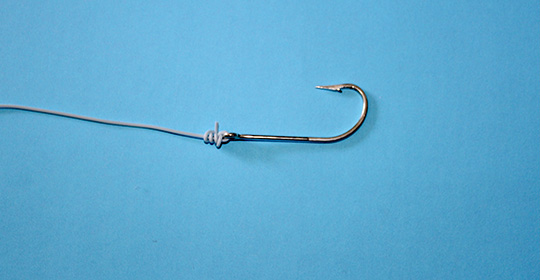
One of the best ice fishing knots to use is the improved clinch knot because it provides a stronger method of securing a fishing line to a hook, lure, or swivel over the original version of the clinch knot. The improved clinch is a snug knot that includes the extra step of bringing the tag end of your line back through the loop before tightening. Many ice anglers like the fact that the improved clinch is a snug knot that helps to keep jigs in a horizontal position when targeting certain species of panfish, such as crappie.
2. Palomar Knot
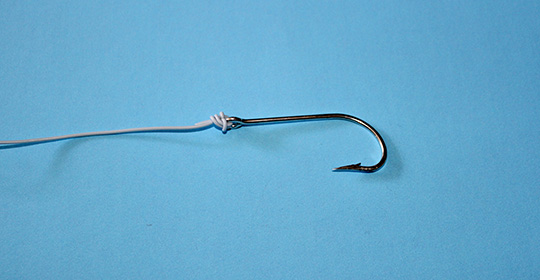
While there will always be some debate on the best knot for ice fishing, there’s no question that the Palomar Knot is a fast and easy knot to tie. The fact that it’s quick to tie is a big advantage when switching your ice fishing jigs. Since this knot can be tied in just a few simple steps, it’s a good knot to use when you don’t have as much dexterity (for example, when your hands are cold or in the low light conditions in an ice shelter). Due to the way this knot is tied using a double line, the Palomar is one of the strongest ice fishing knots you can use. This knot also works well with all types of fishing line (monofilament, fluorocarbon, or braided line).
3. Non-Slip Loop Knot
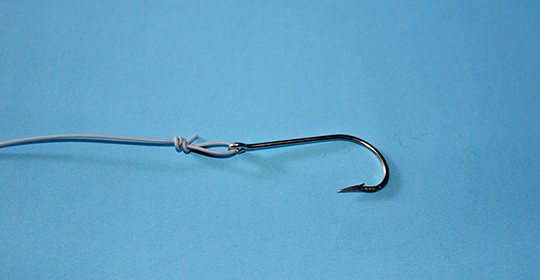
The non-slip loop knot is one of the preferred ice fishing jig knots because it gives the jig more movement at the end of your fishing line. By enhancing the jig’s movement in the water column, you often get more bite from finicky fish during the coldest months of the year. When you use a loop knot for ice fishing to attach your jigs to your leader, the jigs will have better action and wiggle. Plus, the non-slip loop knot holds well when tied with the fluorocarbon lines that are often used for ice fishing.
4. Snell Knot
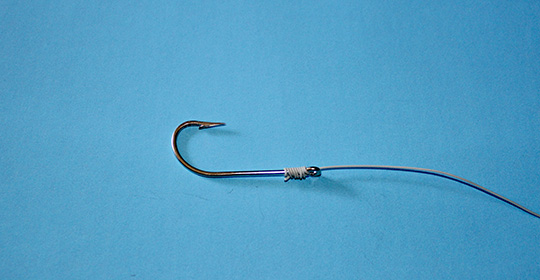
The Snell knot will help keep panfish jigs in position and provide an even direct connection to the fish. When tying the Snell knot with ice fishing jigs, pinch the line, insert the tag end through the loop, and pull the main line to tighten it. This way, the jig will stay horizontal in the water, and the hook-up rate is higher. You can learn how to tie an ice fishing knot, like the Snell knot, by watching online videos or by reading step-by-step instructions.
5. Uni-to-Uni Knot
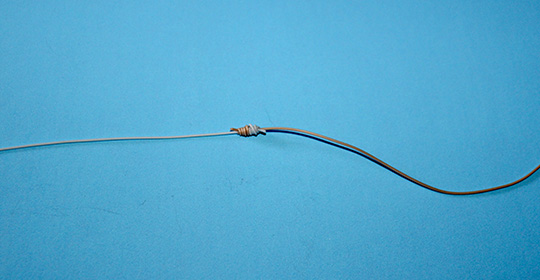
When ice fishing for walleye or pike, you may want to use for braided line for strength and sensitivity. However, since braided line is more visible, you’ll also want to pair your braided main line with a fluorocarbon leader and attach the leader using a uni-to-uni knot. Braid’s strength, lack of stretch, and great sensitivity makes it ideal for jigging deep water for larger fish. The only downside is that braid can collect ice quickly, so you’ll have to grab the line and slide your hand down to remove the ice buildup from time to time.









